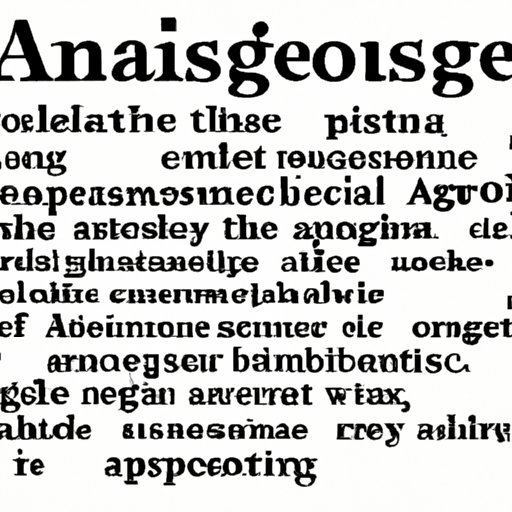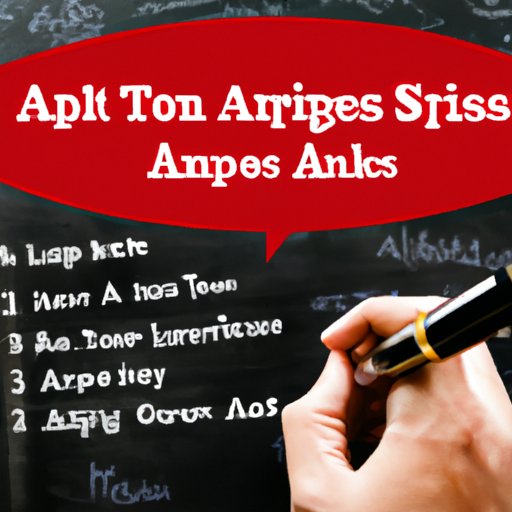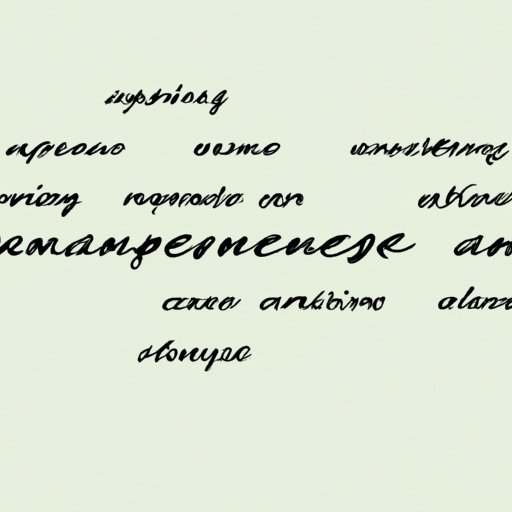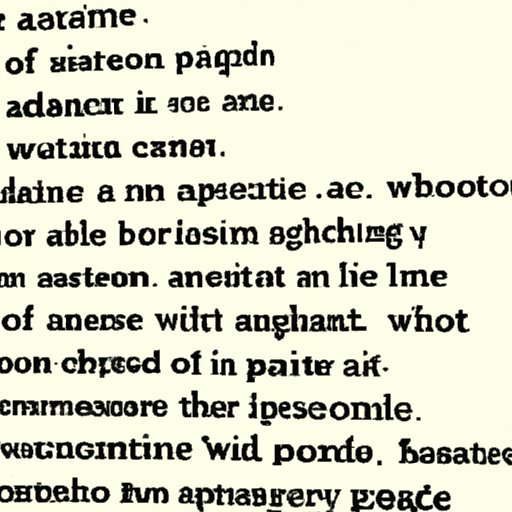Introduction
Assonance is a literary technique that has been used by writers for centuries to create rhythm and flow in their work. It is the repetition of similar vowel sounds in words that are close together in a sentence or phrase. By understanding what assonance is and how it can be used effectively in your writing, you can create more interesting and engaging pieces of literature.

Exploring the Use of Assonance in Literature
What is assonance? Assonance is a type of sound repetition that occurs when two or more words in a sentence or phrase have the same or similar vowel sounds. This repetition creates a rhythmic effect that can add interest and flow to your writing. While assonance is often found in poetry, it can also be used in prose. Let’s explore some examples of assonance in famous works of literature.
Examples of Assonance in Famous Works of Literature
One of the most famous examples of assonance comes from William Shakespeare’s play “Romeo and Juliet”: “But soft! What light through yonder window breaks?” In this line, the vowels “o” and “i” are repeated to create a lyrical sound. Another example comes from T.S. Eliot’s poem “The Love Song of J. Alfred Prufrock”: “And I have known the eyes already, known them all—/ The eyes that fix you in a formulated phrase.” Here, the repeated vowel “o” creates a sense of rhythm and flow.
Writing with Assonance: Adding Rhyme and Flow to Your Writing
Now that we’ve explored some examples of assonance in literature, let’s look at how you can use assonance in your own writing. First, it’s important to understand how assonance can add interest to your writing. By repeating similar vowel sounds, you can create a pleasing rhythm that helps draw readers into your work. Assonance can also help to emphasize certain words or ideas, making them stand out in the reader’s mind.

Tips for Writing with Assonance
When writing with assonance, it’s important to keep a few things in mind. First, try to focus on repeating a specific vowel sound throughout your piece. This will help create a more consistent rhythm. Second, make sure that the words you choose are appropriate for the context. Finally, don’t overuse assonance. Too much repetition can become distracting and take away from the quality of your writing.
A Guide to Understanding Assonance in Poetry
Assonance is often used in poetry to create a pleasing rhythm and flow. By repeating similar vowel sounds, poets can emphasize certain words and ideas, creating a more powerful effect. Let’s take a look at how assonance enhances poetry and explore some examples of assonance in poetry.
How Assonance Enhances Poetry
The use of assonance in poetry can help to create a pleasing rhythm and flow. By repeating similar vowel sounds, poets can emphasize certain words or ideas, making them stand out in the reader’s mind. Assonance can also add an additional layer of meaning to the poem, creating an emotional effect that goes beyond the literal meaning of the words.
Examples of Assonance in Poetry
One example of assonance in poetry comes from Robert Frost’s poem “Stopping by Woods on a Snowy Evening”: “Whose woods these are I think I know./ His house is in the village though.” In this line, the repeated vowel “o” helps to create a sense of rhythm and flow. Another example comes from W.B. Yeats’ poem “The Lake Isle of Innisfree”: “I will arise and go now, and go to Innisfree.” Here, the repeated vowel “o” emphasizes the idea of leaving and going to a new place.

How Assonance Makes Writing More Interesting
Assonance can also be used in prose to make writing more interesting and engaging. By repeating similar vowel sounds, authors can create a rhythm and flow that draws readers in. Let’s explore how assonance can add interest to your writing and look at some examples of assonance in prose.

The Power of Assonance in Prose
In prose, assonance can be used to create rhythm and flow, just like in poetry. However, it can also be used to emphasize certain words or ideas, making them stand out in the reader’s mind. Additionally, assonance can be used to create a mood or atmosphere, adding another layer of meaning to your writing.
Examples of Assonance in Prose
One example of assonance in prose comes from George Orwell’s novel “1984”: “He who controls the past controls the future. He who controls the present controls the past.” In this line, the repeated vowel “o” helps to emphasize the idea of control. Another example comes from Ernest Hemingway’s novel “The Sun Also Rises”: “We all want things to stay the same. Sane and familiar.” Here, the repeated vowel “a” creates a sense of rhythm and flow.
Conclusion
Assonance is a powerful literary tool that can be used to add rhythm and flow to your writing. By understanding what assonance is and how it can be used effectively, you can create more interesting and engaging pieces of literature. Whether you’re writing poetry or prose, assonance can be a great way to emphasize certain words or ideas and create a more powerful effect.
In conclusion, assonance is a valuable tool that can be used to enhance any type of writing. By understanding what assonance is and how it can be used effectively, you can create more interesting and engaging pieces of literature that stand out from the crowd.
(Note: Is this article not meeting your expectations? Do you have knowledge or insights to share? Unlock new opportunities and expand your reach by joining our authors team. Click Registration to join us and share your expertise with our readers.)
